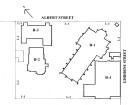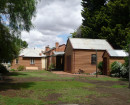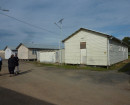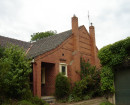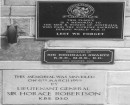Camperdown War Memorial
Finlay Avenue and Manifold Street CAMPERDOWN, Corangamite Shire
-
Add to tour
You must log in to do that.
-
Share
-
Shortlist place
You must log in to do that.
- Download report
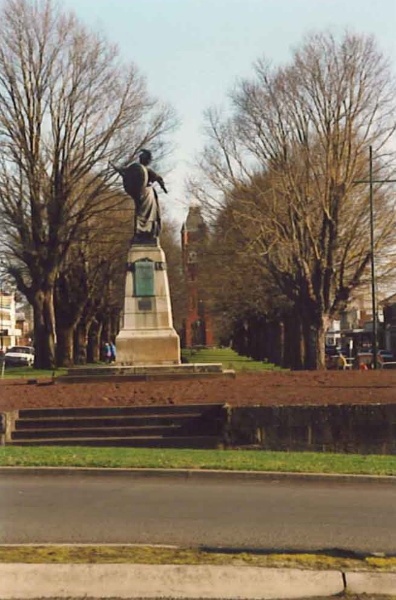

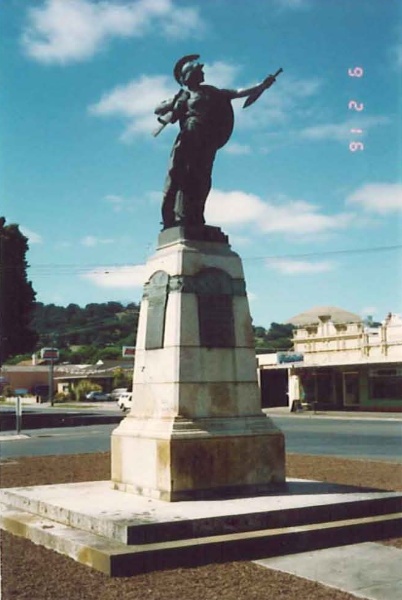
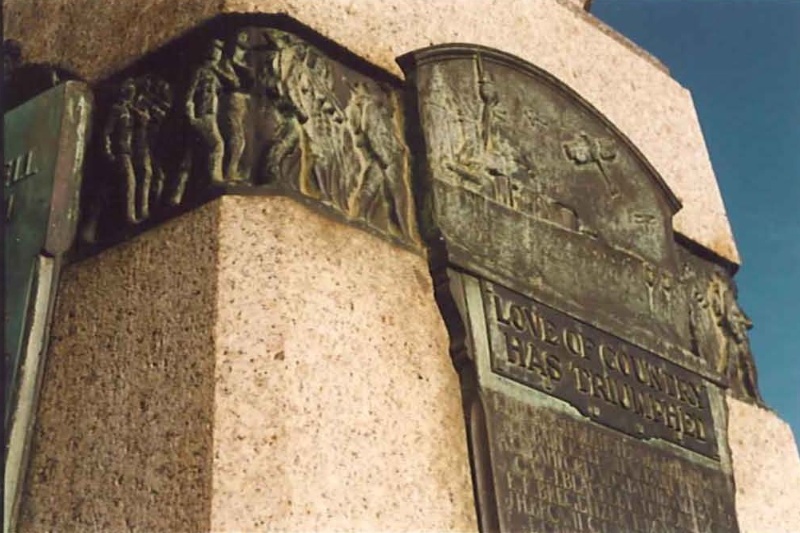
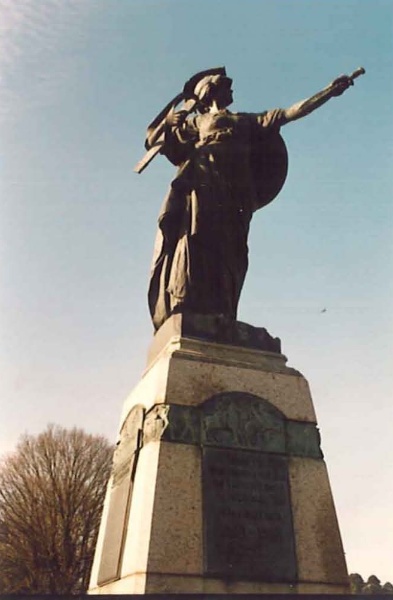
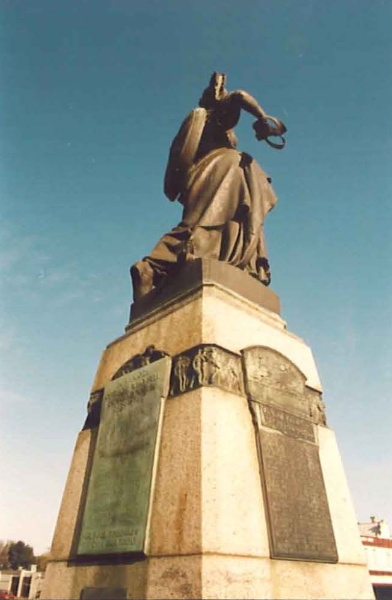
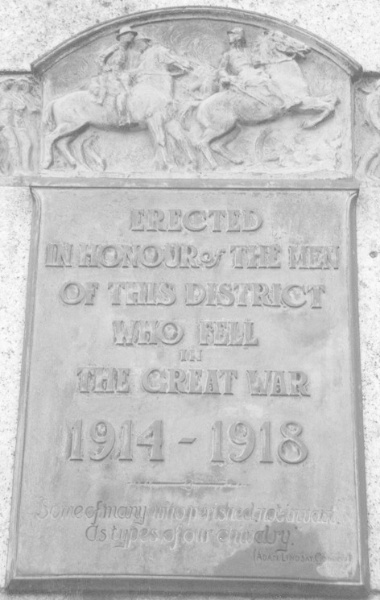
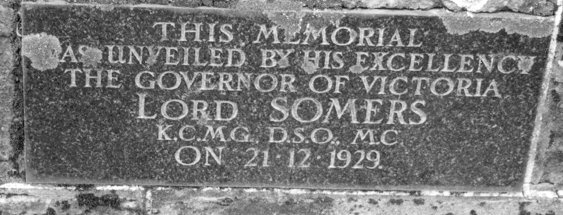
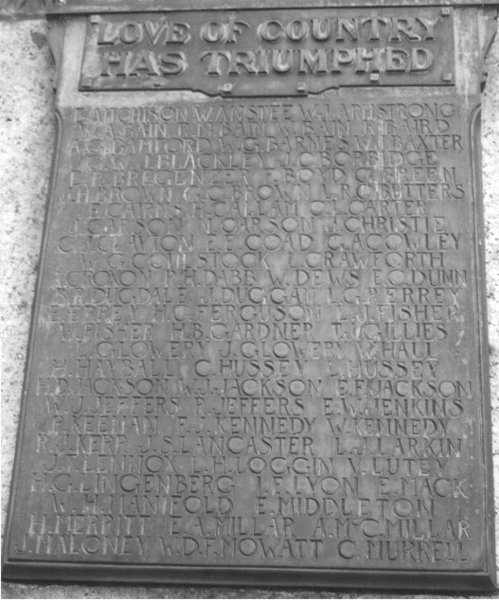


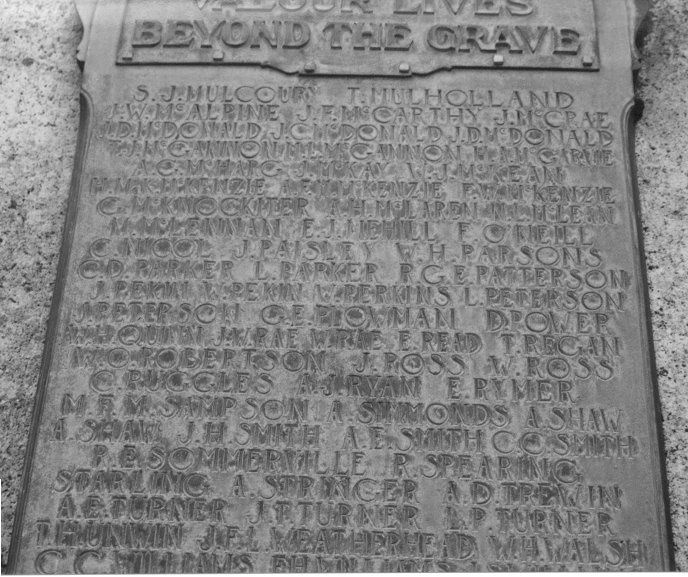
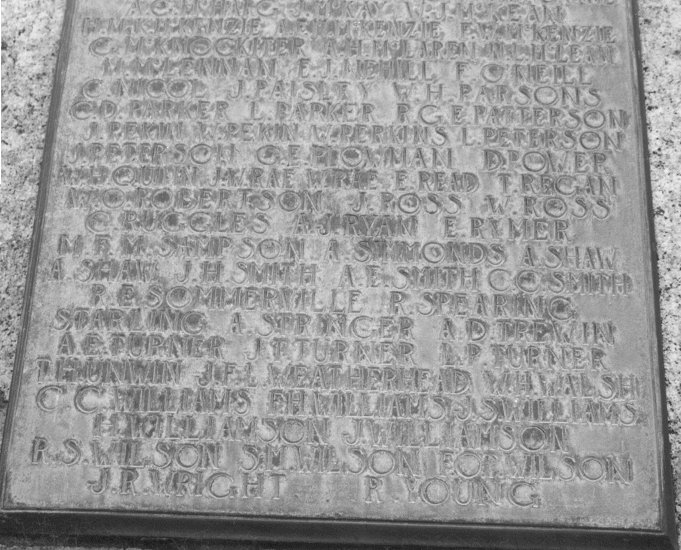



Statement of Significance
The first moves to erect a Soldiers' Memorial in honour of those men and women of Camperdown and district who died on active service in the Great War of 1914-1918 occured in 1922 when a public committee was set up to raise funds and determine an appropriate concept for the memorial. The first sketch designs, for a cenotaph in the London format, were prepared by local architect W. P. Knights in 1923 but were rejected as too costly. A statue was preferred to a more utilitarian form of commemoration and Paul Raphael Montford, an accomplished English trained sculptor and member of the Royal Academy was engaged to design and model the work on 5 July 1926. The following year, Montford won the commission for the exterior sculptural groups at the Shrine of Remembrance, Melbourne, to effectively set his reputation as a classical sculptor in Victoria.
Montford's initial concept, which involved an heroic female figure, 'the Spirit of the Empire calling the Dominions to her aid in the fight she is about to enter upon', met with acclaim and Montford developed the clay model in consultation with eminent committee members including Oscar Nevett and Justice Stewart McArthur in his studio at Toorak. Montford's allegorical figure stands over an axe and fasces as representation of the Civil Order cast down whilst the unsheathed sword in the outstretched left hand is the call to arms, 'the answer to which call is shown by the endless line of marching men surrounding the pedestal with the special panels depicting the other branches of the services engaged'. On the shield is depicted the head of Neptune, the symbol of British sea power. Inscriptions on the monument, as models of 'simplicity and brevity', are derived from selected verse of Adam Lindsay Gordon and Latin phrases from Vergil's Sixth Aenid combined with the Earl of Shannon's motto, all loosely translated.
Although the small bronze panels on the stone pedestal were cast in Melbourne, the plaster model for the statue was sent to London where, after the bronze casting was prepared by A. B. Burton of Thames Ditton, Montford's work was accepted for inclusion in the Royal Academy Exhibition for 1929. Paul Montford designed the base and pedestal of the monument in Tynong granite, the same stone as was then being used for the Shrine of Remembrance in Melbourne, and set his impressive bronze to obliquely face both the Finlay Avenue and the centre of the town.
The Soldiers' Memorial at Camperdown is one of Paul Montford's most distinguished works, a highly accomplished rendition of an allegorical theme in the Classic Academy tradition and one that has considerable aesthetic and intellectual merit. The statue 'Spirit of the Empire' epitomises the desire of the citizens of Camperdown to erect an original and distinctive monument to the fallen, subsequently the sacred reserve was further defined by construction of a perimeter basalt wall in 1954 as a memorial to those servicemen and women who died in World War II. Casualties of the Vietnam War are recorded on the east face of the monument, The Soldiers' Memorial is enhanced by its setting in the Finlay Avenue and the Manifold Street precinct.
The Soldiers' War Memorial at Camperdown is considered to be of State cultural significance on the grounds that:
A It is important for reasons of artistic, religious, spiritual, symbolic, cultural, educational or social associations.
B It represents or ia an extraordinary example of a way of life, activity, custom, process or function.
C It demonstrates creative and/or technical accomplishment in the history of construction or settlement.
D It was influential in the development of style, technology, process or construction techniques, aesthetic theories, architectural design philosophy or demonstrates new and innovative solutions to user requirements.
E It is a representative, extraordinary, rare or essentially intact example of a War Memorial in Victoria.
G It demonstrates an association with an important figure or figures, cultural group or event.
H It is a representative or extraordinary example of Paul Raphael Montford's work.
I It demonstrates typical or outstanding craftsmanship, decoration or use of particular materials.
J It is of considerable age.
-
-
Veterans Description for Public
Camperdown War Memorial - Veterans Description for Public
The first moves to erect a Soldiers' War Memorial, in honour of those men and women of Camperdown and district who died on active service in the First World War, occured in 1922 when a public committee was set up to raise funds and determine an appropriate concept for the memorial. The first sketch designs for a cenotaph, in the London format, were prepared by local architect W. P. Knights in 1923 but were rejected as too costly. A statue was preferred to a more utilitarian form of commemoration and Paul Raphael Montford, an accomplished English trained sculptor and member of the Royal Academy was engaged to design and model the work on July 5th 1926. Montford's initial concept, which involved an heroic female figure, 'the Spirit of the Empire calling the Dominions to her aid in the fight she is about to enter upon', met with acclaim and Montford developed the clay model in consultation with eminent committee members including Oscar Nevett and Justice Stewart McArthur in his studio at Toorak. The following year, Montford won the commission for the exterior sculptural groups at the Shrine of Remembrance, Melbourne, to effectively set his reputation as a classical sculptor in Victoria.
The Memorial is a dramatic, imperial monument representing Britannia, or the spirit of Empire, summoning the Dominions (the white self-governing colonies) to her aid. It draws heavily on classical imagery, depicting Britannia as a heroic warrior woman. Around the pedestal are bas-reliefs depicting scenes from the war. The text on the reliefsuse "high diction", that is heroic language such as "Valour lives beyond the grave". The message is strongly patriotic, "Love of Country has triumphed", a mix of nationalism and imperialism. On the reliefs are the names of the men who served in both world wars.
Montford's allegorical figure stands over a representation of the Civil Order cast down whilst the unsheathed sword in the outstretched left hand is the call to arms, 'the answer to which call is shown by the endless line of marching men surrounding the pedestal with the special panels depicting the other branches of the services engaged'. On the shield is depicted the head of Neptune, the symbol of British sea power. Inscriptions on the monument, as models of 'simplicity and brevity', are derived from selected verse of Adam Lindsay Gordon and Latin phrases from the sixth book of Virgil's Aeneid combined with the Earl of Shannon's motto, all loosely translated.
Although the small bronze panels on the stone pedestal were cast in Melbourne, the plaster model for the statue was sent to London where, after the bronze casting was prepared by A. B. Burton of Thames Ditton, Montford's work was accepted for inclusion in the Royal Academy Exhibition for 1929. Paul Montford designed the base and pedestal of the monument in Tynong granite, the same stone as was then being used for the Shrine of Remembrance in Melbourne, and set his impressive bronze to obliquely face both the Finlay Avenue and the centre of the town.
The Camperdown War Memorial is one of Paul Montford's most distinguished works, a highly accomplished rendition of an allegorical theme in the Classic Academy tradition and one that has considerable aesthetic and intellectual merit. The statue 'Spirit of the Empire' epitomises the desire of the citizens of Camperdown to erect an original and distinctive monument to the fallen, subsequently the sacred reserve was further defined by construction of a perimeter basalt wall in 1954 as a memorial to those servicemen and women who died in the Second World War. Casualties of the Vietnam War are recorded on the east face of the monument.
Heritage Study and Grading
Corangamite - Camperdown - A Heritage Study
Author: Allan Willingham
Year: 1998
Grading:
-
-
-
-
-
FINLAY AVENUE OF ELMS, MANIFOLD CLOCK TOWER AND PUBLIC MONUMENT PRECINCT
 Victorian Heritage Register H0647
Victorian Heritage Register H0647 -
COURT HOUSE
 Victorian Heritage Register H1385
Victorian Heritage Register H1385 -
AJ THOMAS MOTOR GARAGE
 Victorian Heritage Register H1383
Victorian Heritage Register H1383
-
'YARROLA'
 Boroondara City
Boroondara City -
1 Bradford Avenue
 Boroondara City
Boroondara City
-
-






